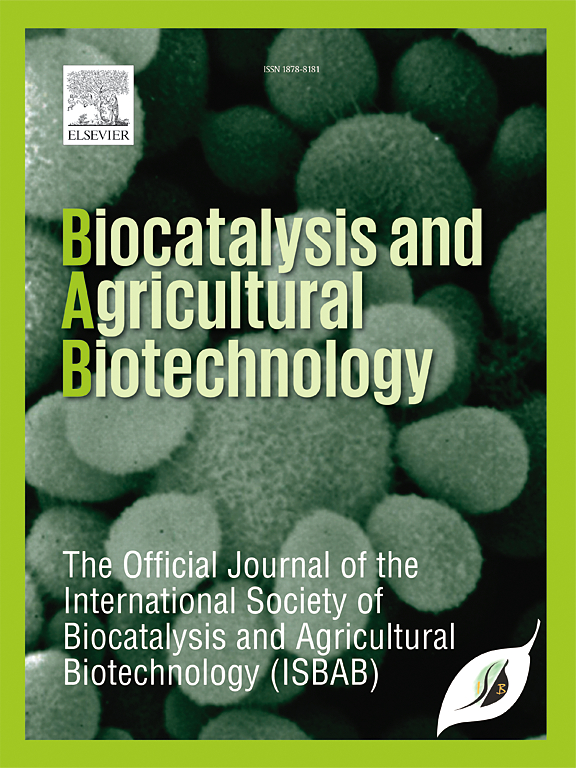Trichoderma asperellum (T42)-mediated expression of CabHLH genes enhances nitrogen use efficiency and nutritional values of chickpea under salt and Fusarium wilt stresses
IF 3.4
Q2 BIOTECHNOLOGY & APPLIED MICROBIOLOGY
引用次数: 0
Abstract
Trichoderma asperellum T42 combats diverse phytopathogens and other stresses. However, its impact under combined stresses in modulating nutritional value and antioxidant properties in edible plant parts has not been thoroughly studied. Three chickpea cultivars, viz., wilt-resistant (JG-315), wilt-tolerant (JG-36), and wilt-susceptible (JG-62), were used to assess nutritional value and antioxidant contents under salt and pathogen (Foc)-challenged conditions. A sharp decrease in nodule numbers and biomass was observed in plants challenged with the combined stresses of Foc and salt in all three cultivars. However, seed treatment with T42 restored the nutritional value, enhanced antioxidant activities (1–2 folds) and increased total phenolic content (1.3–1.5 folds), protein (19–28%), proline, and micronutrients (7–28%) in chickpea seeds, particularly in the T42-treated plants subjected to the combined stress compared to the plants subjected to the combined stress without T42. The expression of two chickpea bHLH transcription factor genes, CabHLH114 and CabHLH115, associated with nodule development and nitrogen fixation, varied under different stresses. The genes were upregulated in T42-treated plants and correlated with the development of root nodules. The results thus suggest that Trichoderma-mediated expression of both nodulation-responsive genes led to the formation of healthy and functional nodules, which helped improve nitrogen use efficiency in the chickpea plants and contributed to the nutritional value of the chickpea seeds. The results highlighted that reduction in nutritional value due to environmental stresses could be restored in crop plants by applying potential bioagents such as T42 that restore nutritional quality and make the crops climate resilient.
求助全文
约1分钟内获得全文
求助全文
来源期刊

Biocatalysis and agricultural biotechnology
Agricultural and Biological Sciences-Agronomy and Crop Science
CiteScore
7.70
自引率
2.50%
发文量
308
审稿时长
48 days
期刊介绍:
Biocatalysis and Agricultural Biotechnology is the official journal of the International Society of Biocatalysis and Agricultural Biotechnology (ISBAB). The journal publishes high quality articles especially in the science and technology of biocatalysis, bioprocesses, agricultural biotechnology, biomedical biotechnology, and, if appropriate, from other related areas of biotechnology. The journal will publish peer-reviewed basic and applied research papers, authoritative reviews, and feature articles. The scope of the journal encompasses the research, industrial, and commercial aspects of biotechnology, including the areas of: biocatalysis; bioprocesses; food and agriculture; genetic engineering; molecular biology; healthcare and pharmaceuticals; biofuels; genomics; nanotechnology; environment and biodiversity; and bioremediation.
 求助内容:
求助内容: 应助结果提醒方式:
应助结果提醒方式:


